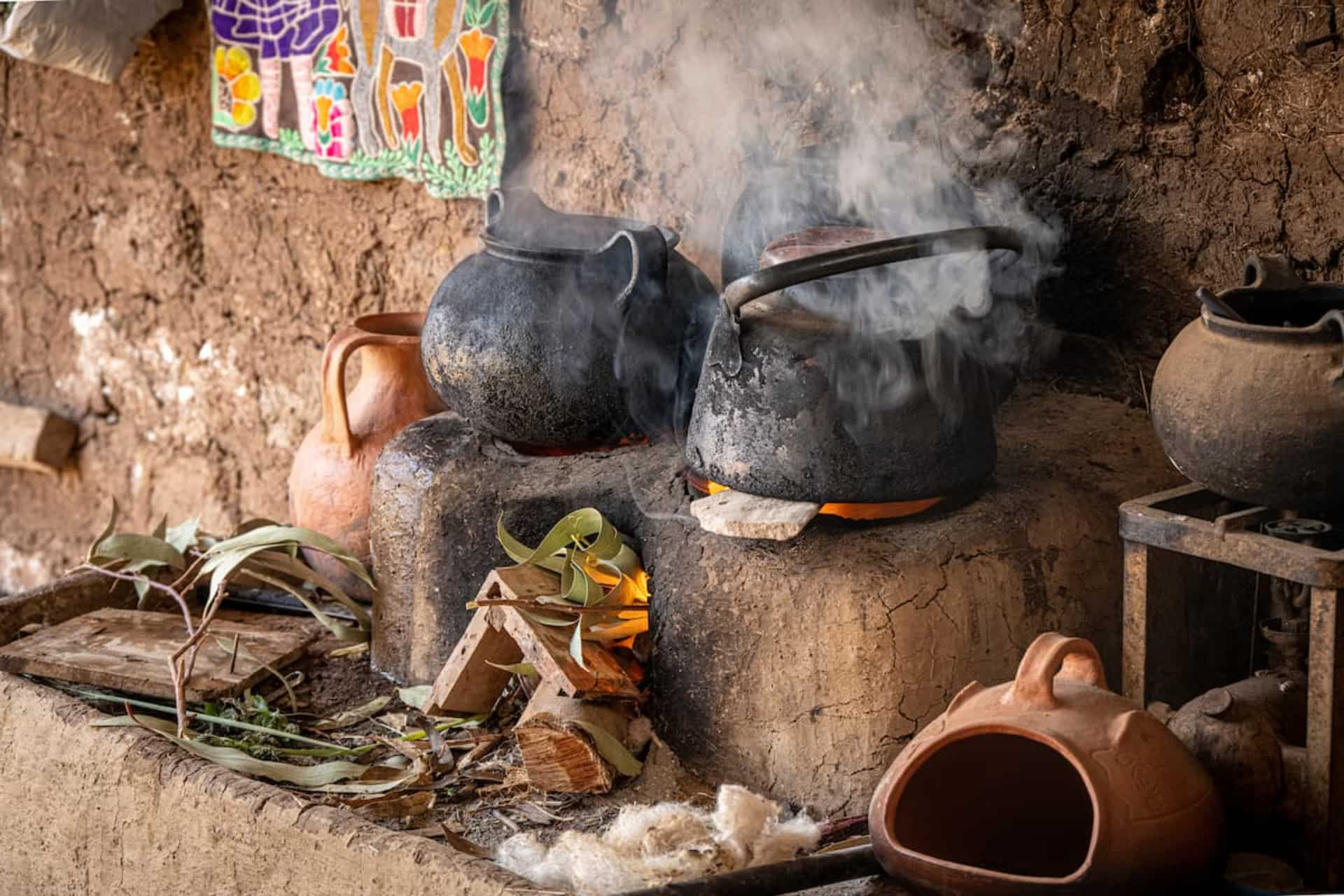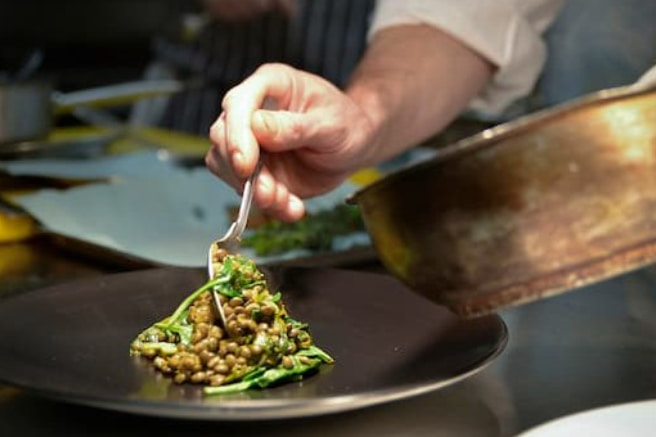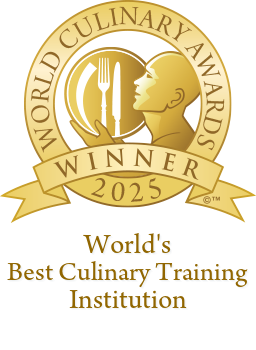A brief overview of the history of cooking

Culinary techniques and practices have evolved extensively over centuries. The ever-changing history of cooking is marked by a range of cultural influences, advancements in kitchen tools and the constant pursuit of flavor innovation.
From ancient methods using rudimentary tools to modern-day gourmet techniques, the progression highlights how societies have adapted their culinary approaches.
Today, chefs integrate a wide array of global ingredients and sophisticated methods, reflecting an ongoing transformation in food preparation and enjoyment.
This article will trace the history of cooking, from the earliest beginnings to the present day.
The dawn of cooking
Discovery of fire in ancient times marked a pivotal moment in the history of food preparation and human evolution.
Estimates suggest that early humans began harnessing fire for cooking as far back as 170,000 years ago.
Before the advent of fire, early humans consumed raw food consisting largely of fruits, nuts, seeds and uncooked meat.
Cooking with fire made food easier to chew and digest, which in turn allowed early humans to extract more nutrients and calories from their meals.
This boost in nutrition is believed to have contributed to the development of larger brains and more complex social behaviors.
Early culinary techniques were rudimentary but effective. Roasting meat over open flames was one of the first methods used, allowing our ancestors to enjoy tender, flavorful and safer-to-eat food.
The direct heat of the fire helped to kill harmful bacteria and parasites, reducing the risk of illness from raw meat consumption.
As time progressed, early humans began to develop more sophisticated methods, such as burying food in hot ashes or using heated stones to cook vegetables.
These primitive techniques laid the foundation for more advanced cooking practices.
The control of fire not only improved the flavor and safety of food but also encouraged communal eating.
Gatherings around a fire to cook and share meals became a cornerstone of social interaction and cultural development.
The role of cooking in civilization development
Humans’ transition from nomadic tribes to sedentary societies marked a significant turning point.
During this era, humans relied on a diet composed of wild plants and hunted animals, necessitating mobility and adaptability.
The food gathered was consumed quickly, with little opportunity for storage or preservation.
The advent of agriculture around 10,000 years ago fundamentally changed this.
As humans began to domesticate animals and grow plants, they established permanent settlements, leading to the rise of sedentary societies.
This shift enabled the cultivation of staple crops such as wheat, rice and maize, which required new cooking techniques and tools.
Pots and pans allowed for boiling and stewing, methods that could tenderize tough grains and legumes and extract more nutrients from food.
These techniques also introduced a variety of flavors and textures, improving the culinary experience and promoting experimentation with ingredients and recipes.
As societies grew and diversified, so did their culinary practices.
As different communities interacted, they shared their culinary knowledge and ingredients, enriching their diets and building connections between diverse cultures.
Spices, for instance, became highly prized commodities, spurring trade routes that connected distant regions and encouraged the exchange of goods, ideas and technologies.
History of cooking in the Middle Ages
This period marked a significant transformation, giving rise to unique culinary practices influenced by social, economic and technological factors across Europe and beyond.
Culinary influences and ingredients
Medieval cuisine was heavily influenced by the availability of local produce and seasonal variations.
Grains were used to make bread, porridge and ale, which formed the dietary staples of the lower classes.
Hardy vegetables and foraged fruit were also major parts of the diet.
Fish, freshwater and saltwater varieties, were also used, particularly in coastal regions and areas with access to rivers.
Cooking techniques and tools
Open hearths and fireplaces were central to medieval kitchens, where food was cooked in pots, cauldrons and pans suspended over flames.
Roasting on spits and baking in simple ovens or clay pots were common methods used to prepare meats and bread.
The development of pottery and ceramics allowed for better food storage and preservation, while metalwork advanced the crafting of knives, ladles and skewers used in food preparation, allowing for more complex dishes.
Spices and flavors
Seasonings played a crucial role in medieval cooking, not only for improving taste but also for their preservative qualities.
Thanks to trade routes and better transport, spices could be imported from all over the world, leading to more nuanced and flavorful food.
Feasting and banquets
Nobles and royalty hosted lavish feasts featuring multiple courses, extravagant presentations and elaborate entertainment.
Banquets showcased the culinary skills of kitchen staff and the abundance of food sourced from estates and trade networks.
This paved the way for formal dinners and large meal events as we know them today.
Preservation and culinary knowledge
New methods of preserving food, such as brine, smoke and salting, all allowed for better trade because food could be preserved and transported in ways that it couldn’t before.
This contributed to local economies and increasing dietary diversity.
Monastic and scholarly communities recorded their culinary knowledge in manuscripts and recipe collections, preserving techniques and methods that would influence cuisine for centuries.

Birth of gourmet cuisine: the professionalization and artistry of cooking
A significant evolution in the history of cooking came with the elevation of culinary arts to an esteemed profession.
This period saw the emergence of sophisticated techniques, refined dining etiquette and the cultivation of elaborate flavors and presentations that continue to define fine dining today.
Professionalization of chefs
Previously, cooking had been primarily a domestic task performed by household servants or family members.
However, with the rise of affluent urban centers and grand hotels or restaurants in the 18th century, demand grew for skilled culinary professionals capable of creating exquisite meals for discerning patrons.
Top chefs such as Marie-Antoine Carême and Georges Auguste Escoffier in the late 19th century and early 20th century played key roles in shaping gourmet cuisine.
Carême, known as the ‘King of chefs and the chef of kings’, introduced elaborate culinary techniques such as intricate pastry work and grand presentations that transformed cooking into an art form.
Escoffier, considered the father of modern French cuisine, emphasized the importance of culinary organization and efficiency in the kitchen, as well as developing classic French sauces and dishes that became staples of haute cuisine.
Artistry and innovation in cuisine
Gourmet cooking during this period was characterized by a focus on quality ingredients, precise techniques and artistic presentation.
Chefs experimented with new culinary methods and the science of cooking, pushing the boundaries of flavor and texture.
Artistry extended beyond the kitchen to encompass the dining experience as a whole.
Restaurants began to emphasize ambiance, service and the aesthetic presentation of dishes.
Table settings, fine china and elegant glassware became integral components of the dining experience, improving the enjoyment and appreciation of gourmet cuisine.
Culinary schools and influential figures
The establishment of these institutions, such as the Auguste Escoffier School of Culinary Arts,
Ecole Ducasse and Le Cordon Bleu further contributed to the professionalization of chefs and the rise of gourmet cuisine.
These institutions provided formal training in culinary techniques, pastry arts and hospitality management, nurturing generations of chefs who would go on to shape the culinary world.
A degree in culinary arts from one of these schools provides an excellent foundation for a rewarding and fulfilling career.
The birth of the modern kitchen
The evolution of the modern cooking space marks a profound shift in culinary culture and household dynamics.
Emerging in the late 19th and early 20th centuries, the modern kitchen transformed from a utilitarian space into a hub of innovation and efficiency.
Advances in technology, such as the introduction of gas and electric stoves, refrigerators and plumbing, revolutionized food preparation and storage.
This era saw standardized kitchen layouts, improving workflow and ergonomic design to optimize cooking processes.
The modern kitchen not only improved access to cooking tools and appliances but also empowered individuals, particularly women, by liberating them from the constraints of traditional cooking methods.
"In the modern kitchen, we must respect the past while embracing the future."
As modern kitchens became more integrated into the home and social life, they encouraged experimentation, creativity and the development of new culinary traditions that continue to shape how we cook and eat today.
New trends in cooking
Culinary developments and innovations reflect changing consumer preferences, technological advancements and a deeper understanding of nutrition and sustainability.
Some of the more modern developments in the culinary arts include:
-
Plant-based revolution: chefs are exploring inventive ways to create delicious, satisfying dishes using substitutes for meat and dairy
-
Zero-waste cooking: rethinking traditional approaches to food preparation to minimize excess at every stage, from sourcing ingredients to using kitchen scraps creatively
-
Fermentation and preservation: foods such as kombucha, kimchi and sourdough bread are valued for their distinctive tastes and for their probiotic benefits and contribution to a diverse, balanced diet
-
Hyper-local ingredients: forging direct relationships with local farmers, foragers and artisans to procure the freshest seasonal produce, herbs and specialty products. This trend celebrates regional flavors and supports local economies while reducing the carbon footprint associated with food transportation
-
Cross-cultural fusion: blending diverse culinary traditions, techniques and ingredients to create innovative and culturally rich dishes. This trend reflects a globalized palate and builds appreciation for culinary diversity and heritage
-
Technological integration: from precision cooking equipment and smart appliances to AI-driven recipe development and robotic kitchen assistants, chefs are using restaurant technology to streamline operations and push culinary boundaries. Digital platforms for recipe sharing, meal planning apps and virtual cooking classes are also empowering home cooks to explore new cuisines and techniques
-
Focus on health and wellness: incorporating superfoods, functional ingredients and ancient grains into menus to promote benefits such as immunity support, energy boosts and gut health. This trend aligns with consumer demand for healthier dining options without compromising on flavor or culinary creativity
-
Personalization and customization: catering to individual preferences and dietary needs, chefs and restaurants are offering tailored menus, build-your-own meal options and allergen-friendly choices to accommodate diverse tastes and dietary restrictions
Conclusion
Throughout the history of cooking, the art of preparing food has not only fulfilled our essential need for nourishment, it has also been pivotal in shaping cultural identity, social bonds and technological progress.
Ancient civilizations laid the groundwork for culinary techniques that continue to influence modern cuisine.
The Middle Ages introduced gourmet cooking and the subsequent rise of professional chefs, along with new kitchen technologies, transformed food preparation and preservation.
The evolution of culinary practices illustrates human creativity and the joy of sharing meals.
It highlights the fact food nourishes body and spirit, linking us with our past, present and future through the enduring tradition of preparing and enjoying meals together.
If you want to become a part of the great history of cooking, a degree from a renowned French culinary institute can help prepare you for life as a food professional.


